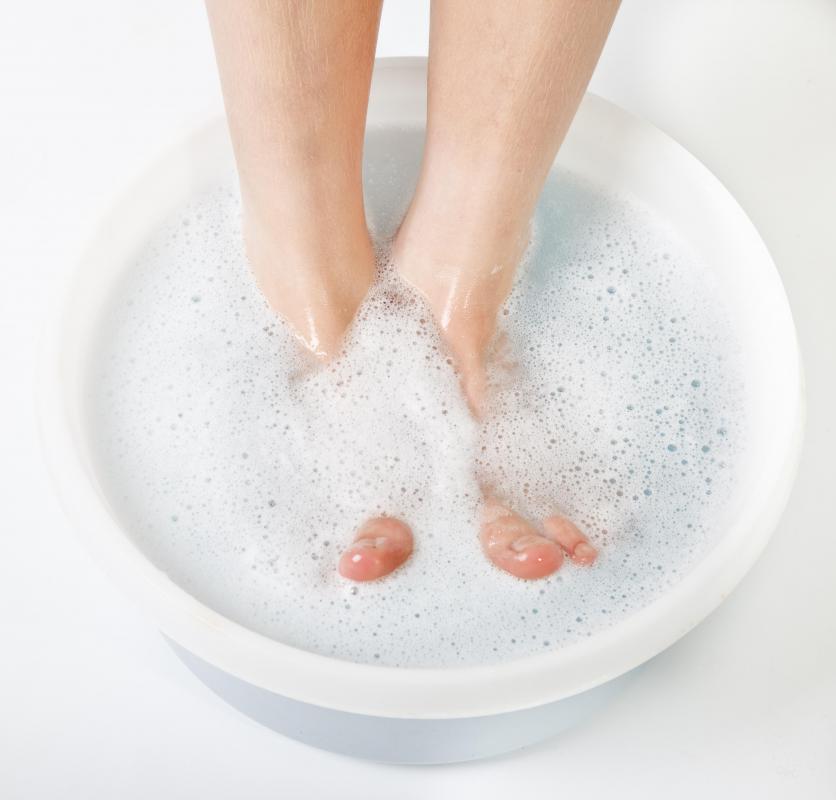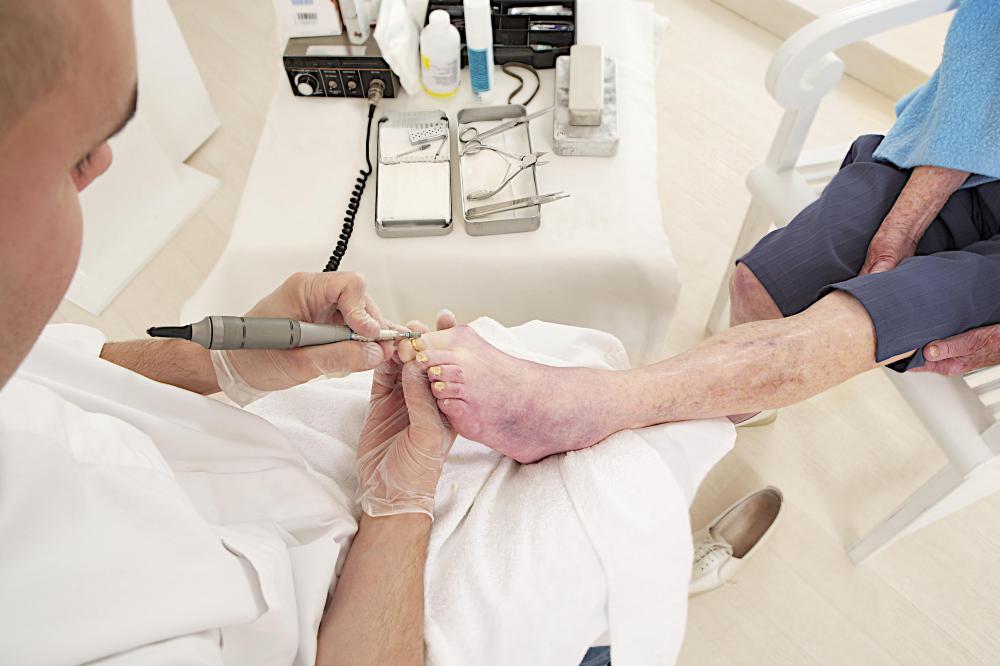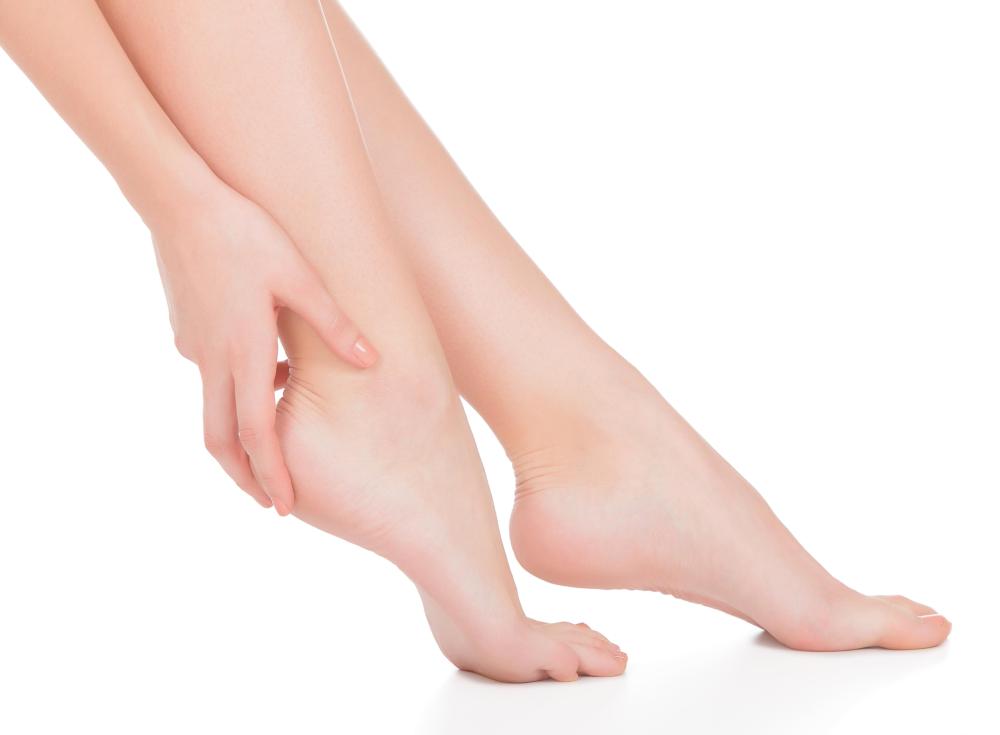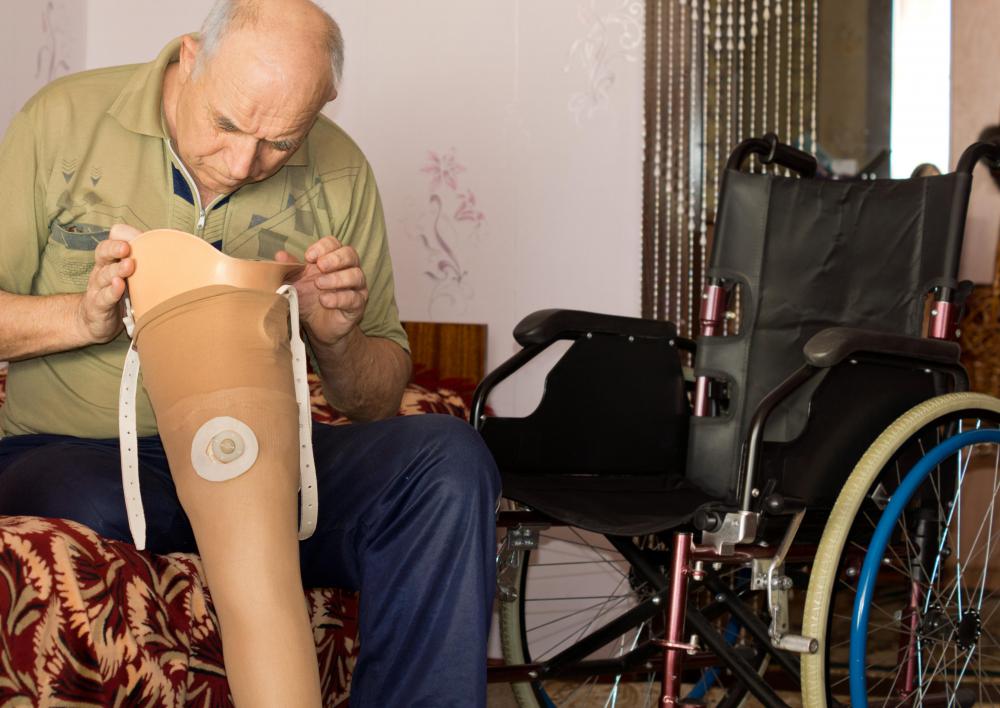At TheHealthBoard, we're committed to delivering accurate, trustworthy information. Our expert-authored content is rigorously fact-checked and sourced from credible authorities. Discover how we uphold the highest standards in providing you with reliable knowledge.
What are the Different Types of Foot Care?
Foot pain often is a common problem that many people wrestle with on a frequent or occasional basis. Since the human body places a lot of pressure on the feet, it can be important to practice proper care of the feet, especially if a person has health problems such as diabetes. Improper foot care may lead to chronic foot pain, surgery, or something more serious such as foot amputation. Some of the different types of foot care include care for bunions, calluses, and diabetes.
A bunion is a bump on the side of the big toe that can cause pain at the joint and may force the big toe against the second toe. This condition often affects women more than men. For bunion foot care, it is recommended that a person wear wide-toed shoes and place bunion spacers between the big and second toe on a nightly basis. Tight-fitting shoes usually should be avoided as much as possible. Without proper care, bunions could lead to chronic foot pain, deformity, and bunion removal surgery.

Calluses are hard thick layers of skin that can be found on the bottom or side of the foot. Normally, calluses are caused by an item placing pressure against an area of the skin. One of the foot care recommendations for calluses is to determine the cause of the pressure, such as tight shoes, and eliminate it. Most of the time calluses are not considered to be a serious problem and often heal within a couple of weeks. If a person has any signs of infection from their calluses, he may need to seek treatment from a physician.

People with diabetes may develop diabetic neuropathy, which is known as nerve damage to the feet. As a result of the nerve damage, a person may not be able to feel any pressure or injuries to their feet. For diabetes foot care, a person with diabetes typically should examine their feet regularly, wear comfortable shoes at all times, exercise frequently, and keep their blood-sugar level under control. Complications from diabetes can cause a serious bacterial infection in the feet, which could lead to amputation.

Taking proper care of the feet usually should be taken very seriously. Proper care and treatment typically will keep most feet healthy and pain free. If a person is experiencing any problems or issues with his feet such as chronic pain or swelling, he may need to see a physician or podiatrist for an evaluation.
AS FEATURED ON:
AS FEATURED ON:

















Discussion Comments
@umbra21 - Actually, I think the absolute best thing you can wear is nothing, if you want to really help your feet. Walking barefoot is much better for you than wearing shoes.
Obviously not anywhere your feet might get hurt, but if you can take your shoes off inside it's good for you as well as your carpets.
@MrsPramm - High heels are pretty bad in terms of causing foot injuries, it's true. But I think part of that happens because of a lot of women will go looking for cheap shoes (especially when they are young) and end up with shoes that simply aren't supporting their feet properly.
By the time they get to the age where they might not be spending as much time in heels, they are moving onto more sensible and well-made shoes as well, but by that point the long term damage might already be done.
The answer isn't to get fancy footcare shoes either. It seems like there is a new fad every few years, with barefoot shoes or elevated shoes, all claiming to be better for your feet and health, but generally a decently made sports shoe is the best thing you can wear and has the most evidence supporting it.
I never liked having wide feet, as it was impossible to squeeze myself into smaller shoes and that got kind of expensive after a while, even though I usually could only find fairly plain shoes to wear. I often end up in the men's section, as the women's section doesn't tend to have my size very often.
But recently I've realized that my feet are probably going to be in much better shape when I'm older than the average woman's foot, just because I haven't been wearing fancy shoes as much as the other girls around me. Apparently bunions are often caused by tight shoes, as well as being aggravated by them.
My feet might not look like the idea feet, but they are strong and still in pretty good shape in spite of their age, so I'm trying to be happy with what I've got.
Post your comments